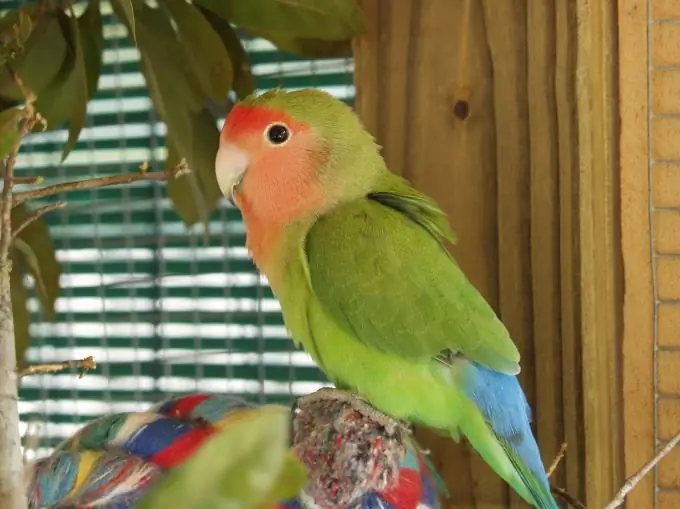- Author Delia Mathews [email protected].
- Public 2023-12-16 00:05.
- Last modified 2025-01-22 15:45.
Parrots usually get along well with their owners. But in their life, too, anything happens, and it may well be that the lovebird will pass from one owner to another. An adult parrot that has changed owners, like a chick just taken from a nesting house, needs time to get used to a new environment and new friends. Lovebirds are less tamed than other small parrots. But he can be taught not to be afraid of people, to respond to a name and even eat from his hands and sit on his shoulder.

It is necessary
Parrot toys and food
Instructions
Step 1
Place the cage higher. Many parrots do not like being bent over the cage, and until you know your lovebird, it is better not to annoy him in vain. In the early days, leave the lovebird alone. Let him take a good look around. An adult parrot usually takes one or two days to get used to the new environment. The chick needs more time. It is not excluded that he will simply be hammered into a corner. Never mind, he needs to look around. But put some food on the floor, because it can be scary for the baby to approach an unfamiliar feeder. Try to disturb the lovebird less often during this time. Approach the cage only if you need to clean it up, add food or change the water. Talk to your baby in a calm voice. Call your parrot by name.
Step 2
After a week, you can start taming your baby. Feed him often. Give small amounts of food, but every 3-4 hours. The parrot should get used to the fact that you come to his cage, and nothing bad happens to him. Talk to him all the time and call him by name.
Step 3
When you are sure that the bird has stopped worrying when you appear, you can try to lower the cage lower and come closer to the cage. Let the bird watch your face. But you should not stick your hands into the cage unless absolutely necessary. Lovebirds really don't like it when someone occupies their territory. You can try to pet the bird only when the parrot itself begins to show interest in your hand. If you are not afraid of a sharp beak, try hand feeding. But this can only be done if the parrot is absolutely friendly to you. If you notice the slightest sign of dissatisfaction, remove your hand, because the parrot can inflict painful wounds.
Step 4
Play with the parrot. First, offer him different toys. When he gets comfortable with them a little, try stretching the pear out with your palm outstretched. If the parrot takes it easy, continue with the exercise. If you get angry, postpone the session until another time.
Step 5
When the parrot gets used to your hands and to the new environment, start releasing it from the cage, while teaching it to return there. If the bird permits, take it in your hands and place it on your shoulder. It is possible that the lovebird will like such a perch and will use it regularly. The main thing is not to force events. Do not insist if the bird does not go into the hands.






